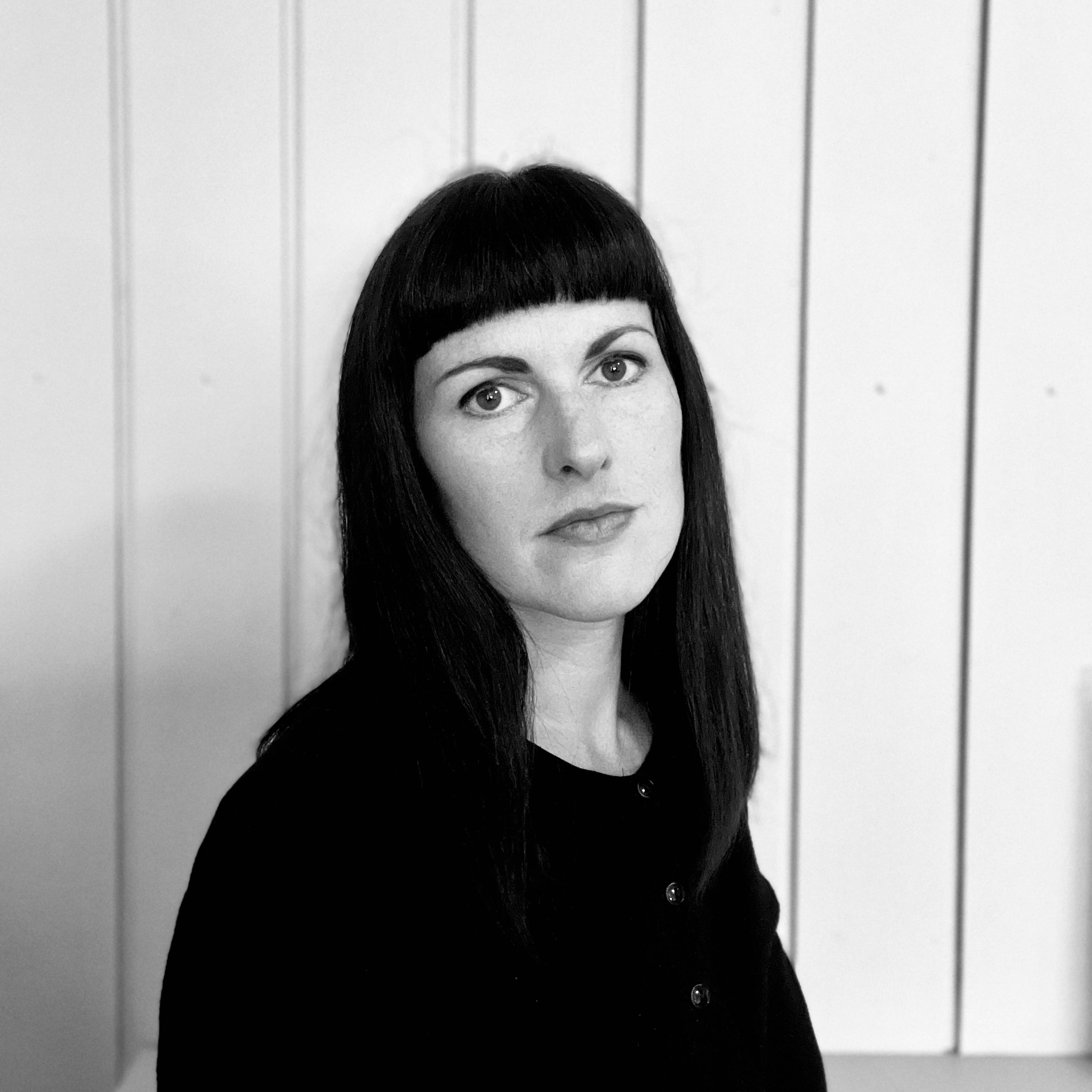Some Thoughts with ... Sarah K. Balstrup
4 Dec 2022The Author/s

Sarah K. Balstrup
Sarah K. Balstrup is an Australian author of dark fantasy and former Religious Studies academic. Her work gravitates toward the liminal and surreal, exploring religious themes with an air of dark romanticism.
Her other passions include Nick Cave and her morning coffee.
Sarah lives in Canberra with her record-collecting husband and two children.
The Interview
Welcome to my favourite section of the website, talking with the authors. Today we are accompanied by Sarah K. Balstrup, whose debut, The Way of Unity, will be published in February 2023.
Let's dive in!
1.- What inspired you to write The Way of Unity?
I started writing The Way of Unity in 2020, drawing on some old notes from my journal. Originally the entire story was set in Avishae and was told through the eyes of a young girl discovering the hidden power of the Elshenders (Zohar, Ambrose, Rebekah, and Bethany). Waldemar was part of the story too, as Ambrose’s mentor.
These old drafts did not possess a clear theme, but the isolation of lockdown, the death of a friend, and unanswered questions lingering from my Religious Studies research left me thinking about the importance of connection – in both its ordinary and extreme forms (e.g. intimate friendship, romantic union, the maternal bond, our relationship with ancestors and the dead, and the spiritual desire for oneness with the divine).
I wanted the society of the novel to experience a fundamental change, from psychic closeness to alienation. You could say this was inspired by the lockdowns but it was also influenced by the concept of the ‘Death of God’ and the idea that before secularisation, society was united by faith. To bring about this change, I needed a villain. Someone who could ‘kill God’, essentially. But as Sybilla’s character developed, she ended up taking over the entire story, and the more I thought about her, the more sympathetic my portrayal became.
Now that things have settled down a bit with the pandemic, I can see that I was definitely channeling feelings of grief associated with the world that we had lost. I felt so sad at the time for my newborn son who I feared would never know what it was like to be a part of a community. Thankfully, things are not so dire now.
2.- Why did you decide to write dark fantasy?
I didn't make a conscious decision to write in a particular genre and had to figure out what to call it once I had finished. Occasionally I describe The Way of Unity as 'dark literary fantasy' to account for the lyrical style and religious/philosophical themes, but really, this book does not fit neatly in the fantasy genre. It has epic fantasy elements, and a tone of dark romanticism, but is also influenced by literary fiction, poetry, religious writings, and music.
3.- What would you say inspired you into creating the religion of The Way of Unity?
I was thinking about entropy and the death of the Sun. Imagining everything that is concentrated here on Earth just evaporating into nothingness, moving ever outward. Then, I began to imagine a religion that protects, surrounds, concentrates, and distills, that exists to counter the inexorable movement outward. Many ancient religions revere a divine mother and divine father. I thought about other dualistic conceptions of the world, particularly the dual spheres of sky and sea (above/below). Who would inhabit the sky and sea? This is how I created Kshidol, the carrion bird, and Siatka, the water serpent, Velspar's holiest beings. Drawing images of them with the planet in between, I ended up with the image of The Eye of Velspar which is also featured in the Skalens' Star. Siatka and Kshidol distill consciousness in a physical place (Velspar), and the planet is conceived as an eye because consciousness resides there, awake and alive, in the spirits of the faithful.
4.- How would you say being an expert in Religious Studies has influenced the craft of this novel?
I did not do any specific research for this novel but it is fair to say that the book’s symbolism, religion, and world-building grew from ideas that accrued in my mind during my years of Religious Studies research (on 1960s counterculture, Western Esotericism, and mystical traditions).
The religion of Velspar is not supposed to represent a particular faith but draws from Tibetan Buddhism (sky burial, reincarnation), shamanistic and psychedelic ritual (meditative visionary states achieved by smoking the Alma), Gnosticism (strong spirit/matter dualism) and the Protestant critique of religious intermediaries that fuelled the individualistic religious practices of the New Age.
The chants, hymns, and animal deities (Siatka and Kshidol) were inspired by Jerome Rothenberg’s Technicians of the Sacred (religious poetry and songs from around the world).
In a more abstract sense, The Way of Unity is connected with my research on romantic love and religious experience as this work is also concerned with the connection between the individual and the ineffable.
If people are interested in my academic writing, links can be found on my website: www.sarahkbalstrup.com
5.- How would you say it is different to write fiction to non-fiction?
They are not as different as you’d think. For me, academic writing has always felt creative, it is just creativity set within specific limits. Because academic writing must refer to evidence and existing research, putting an argument together is a little like the art of collage – combining existing elements in illuminating ways. Writing a novel is more like painting. You might paint in a style that recalls other artists, but no matter what, you must make every brushstroke with your own hand.
6.- Which aspects of the writing craft would you say are the most difficult for you?
Dialogue is always the most difficult to get right. When I was younger, I painted a self-portrait that took an entire year to complete. The position of the face remained in more or less the same position, but the essence of the portrait did not become clear for a long time. I tend to write in the same way. I put down a layer of writing, step back, look at the structure, ask questions, reformulate my ideas, add another layer, etc. I have to have everything in place, working harmoniously, before the dialogue begins to sound authentic.
7.- If I'm not wrong, you were working this NaNoWriMo in a new novel, what could you tell us about it?
I have two projects on the boil at the moment. The first one is the sequel to The Way of Unity, covering the time that elapses between the last two chapters. I have always considered The Way of Unity to be complete on its own, so A Trail of Stars will focus on different themes, but it does take place in the same world. I am currently reading Ursula Le Guin’s Earthsea series and I like the way she connects her stories without making them too reliant on one another. Where The Way of Unity was inward looking, A Trail of Stars moves beyond the lands of Velspar into unchartered territory.
My second project is quite different (the one that I started during NaNoWriMo2022). Set in pre-pandemic Canberra, Australia, Sunshine tells the story of Dawn, a struggling single mother who becomes obsessed with the Griffin’s original town plan for Canberra, perceiving certain places as cursed because they do not adhere to the Griffins’ cosmic vision (Canberra’s designers were influenced by the ideas of Rudolf Steiner, Theosophy etc.). Following a neighbourhood tragedy, Dawn’s cleansing rituals attract a following and soon she becomes a kind of ‘cult leader’ helping a group of bereft mothers overcomes their grief, even as her own life falls apart.
8.- What can we expect from Sarah K. Balstrup in the future?
I am not the fastest writer on earth, but I am always working on something. Expect weirdness, religious themes, altered states of consciousness, and characters with psychological depth.
